Navratri Garba
Hindus across India have many ways of celebrating Navratri Festival. The way it is celebrated in Northern India would be the exact opposite of how it is celebrated in Southern India. The attitudes of the people in West Bengal, in the east, is very different during the season of Navratri because the occasion is celebrated as the victory of good (Ma Durga) over evil (Mahishasura). In the western state of Gujarat, Navratri is a nine-day carnival complete with glowing city lights, scintillating dance performances and groovy music. The popular folk dance of Gujarat known as Garba is the highlight of the Navratri festivities in the State. This article will teach you more about the famous Garba dance of Navratri.
| Navratri Cards | ||||
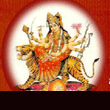 SEND SEND |
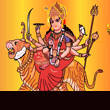 SEND SEND |
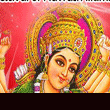 SEND SEND |
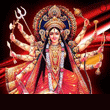 SEND SEND |
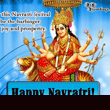 SEND SEND |
| Navratri | History | Significance | Celebrations | Dates | Puja | Vrat Katha | Fasting |
| Garba | Cards | Messages | SMS | Recipes | Wallpapers | Greetings | Scraps |
The Dance of Navratri Garba
The Garba is performed in Gujarat on festive occasions like Navratri, Sharad Purnima, Vasant Panchami and Holi. When the dance is performed during the nights of Navratri it is an act of worship for the Goddess Jagdamba. The dance is performed mostly by women, but men can now take part in it as well.
The dance starts with the performers in a circular formation. ‘Garba’ comes from the words ‘Garha Deep’ a lamp placed inside the perforated earthen pot known as a a Garba. The pot is illuminated by the lamp inside it, which represents the seed of life. Legend has it, Usha, the grand daughter-in-law of Lord Krishna, popularized Lasya Nritya, which is now called Garba.
In its original form Garba had the women place the pot ‘Garba’ with the lamp on top of their heads, then they began to dance in a circular motion. They also sing and clap their hands and continue to dance in circular steps, very gracefully. The dance is accompanied by traditional instruments. The pot contains a single betel nut and a silver coin. On top of the pot is a coconut to give it an appearance resembling a holy ‘Kumbh’. Deep in the interior of Gujarat, there exists a tradition whereby women place the perforated earthen pot, together with the lamp inside it, at the center of a stool and dance around it all the while clapping their hands and singing songs of praise to the Goddess Jagdamba.
During the festival of Navratri, the Garba dances occur at night. The performances are choreographed by the different cultural communities and clubs. During the ‘Garba Night’ the dancers gather in an open space, or a club or a street corner. They form a circle around an idol or a photo of the goddess. The dance begins with the beat set to a slow tempo. As the dance proceeds the energy level of the participants increases with the quickening of the beat and tempo of the music. The music is orchestrated by the drummer who sits in the center of the dance circle.
Navratri Garba is of the most colorful of all dances. The dancers, men and women alike, weak colorful and attractive traditional attire. Most dancers where the sari in the typical Gujarati sytle. In the region of Saurashtra, the performers wear majestically embroidered petticoats called a Ghaghara wityh a backless choli or kapdu with a head cover called a odhani. They also wear lots of silver jewelry on their head. While the men would wear a Kediyum shirt and vajani trousers with a rumal head piece. The traditional instruments of the Garba are the Drum, Harmonium and Naal.